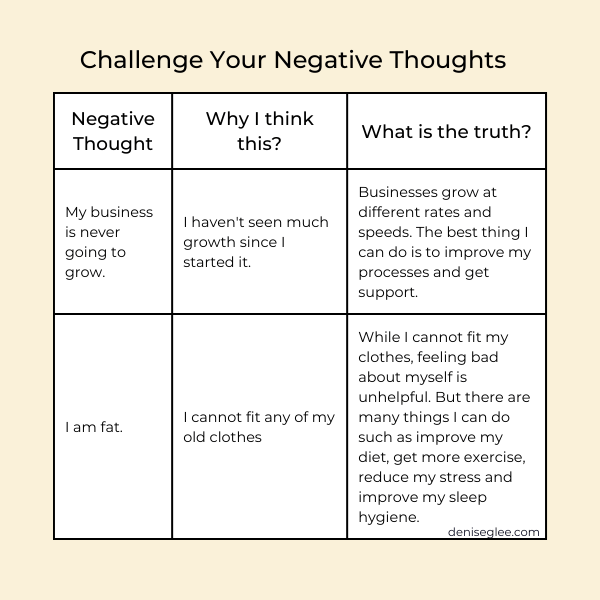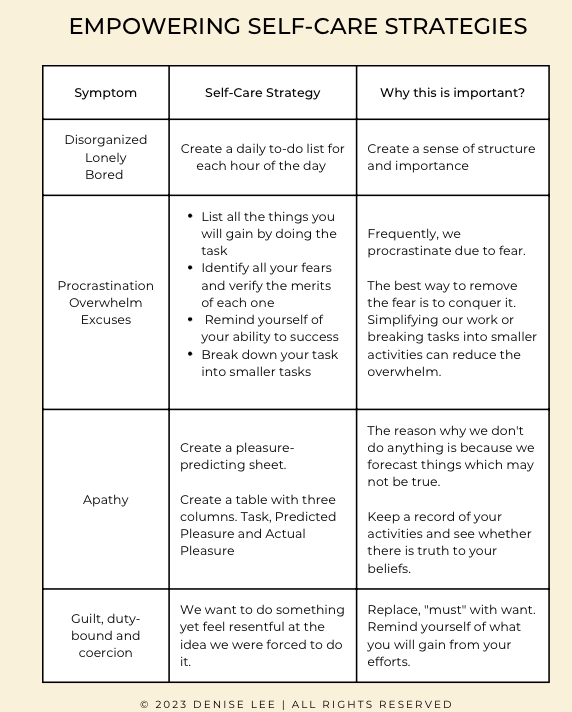
Navigating Depression: Finding Support and Healing
Important Note: Depression is a serious condition that can involve self-harm or suicidal thoughts. The guidance here is not intended to replace or override medical advice. If you or someone you know may be struggling with depression, please seek help from a licensed mental health professional.
- Updated: October 30, 2024
Depression goes far beyond everyday sadness or disappointment. It’s a heavy, persistent fog that clouds your mind, weighs down your body, and dulls your spirit. Often, it prevents you from seeing situations—and even yourself—clearly.
As an entrepreneur and healing coach, my goal is to help you regain a positive and balanced perspective on life. In this article, we’ll define depression and explore ways to begin healing through a cognitive, thought-focused approach.
Whether you’re experiencing depression yourself or are supporting someone who may be, keep reading to understand this condition better and discover practical approaches to manage it.
Understanding Depression: A Comprehensive Overview

Depression is a complex issue that requires a proper explanation. Some types of depression are the product of life circumstances, while others may be the result of a chemical or hormonal imbalance.
Several hormones are known to be linked to depression, and imbalances in these hormones can contribute to the development of the condition.
Some of the key hormones involved include:
- Serotonin
- Cortisol
- Thyroid hormones
- Estrogen and progesterone
- Testosterone
For example, you or someone you know may be depressed is due to inability to generate serotonin naturally. Accessing sunshine does more than help improve the quality of your tan, it activates retina to release serotonin, a natural mood stabilizer.
Let’s discuss the different types of non-hormonal and hormonal types of depression.

Non Hormone-Linked Depression*
Major Depressive Disorder (MDD):
Also known as clinical depression or major depression, MDD is the most common and severe form of depression. It is characterized by persistent feelings of sadness, hopelessness, and a loss of interest or pleasure in most activities.
Symptoms often interfere with daily life and can last for weeks or months if left untreated.
Situational or Reactive Depression:
Reactive depression occurs in response to specific life events, such as the loss of a loved one, a breakup, job loss, or a traumatic experience. The depressive symptoms are directly related to the triggering event and may gradually improve as the person copes with the situation.
*Although I classified these types of depression as non-hormonal, it is possible that hormones can be triggered by stress-inducing events, creating a hormonal imbalance.
Next, let’s discuss hormone-linked forms of depression.
Hormone-Linked Depression
Persistent Depressive Disorder (PDD) or Dysthymia:
PDD is a chronic form of depression where individuals experience a low mood for an extended period, typically lasting for two years or more.
While the symptoms may not be as severe as in MDD, they are long-lasting and can lead to significant impairment in daily functioning.
Seasonal Affective Disorder (SAD):
SAD is a type of depression that follows a seasonal pattern, typically occurring during the fall and winter months when there is less natural sunlight.
Symptoms include low energy, oversleeping, weight gain, and withdrawal from social activities.
Postpartum Depression (PPD):
PPD occurs in some women after childbirth and is characterized by intense feelings of sadness, anxiety, and exhaustion. Hormonal changes and other factors contribute to the development of PPD, which requires prompt attention and support.
Bipolar Disorder:
Bipolar disorder is not exclusively a form of depression, but it includes depressive episodes as one part of the condition.
People with bipolar disorder experience alternating periods of depression and mania or hypomania (elevated mood). When in the depressive phase, they exhibit symptoms similar to those with MDD.
Psychotic Depression:
This type of depression is accompanied by psychotic symptoms, such as hallucinations (seeing or hearing things that are not there) or delusions (holding false, irrational beliefs).
Psychotic depression is a severe condition that requires immediate medical attention.
Atypical Depression:
Atypical depression is characterized by mood reactivity, where individuals may experience temporary improvements in mood in response to positive events. Other symptoms include increased appetite, weight gain, excessive sleep, and a feeling of heaviness in the limbs.
Important: You can treat depression as well as trauma-related symptoms without medicine. I speak about how to do it in this article.
In the next section, I will share my own personal story with depression.
My PDD depression story

Even though I am a life coach and actively practice self-care and mindfulness, I am very familiar with depression.
For many years, I had been suffering from depression. Upon reflection, I realized that it was my own fault. I constantly worried about things and people that I couldn’t control, as well as consumed negative and pessimistic news to stay “informed.” To make matters worse, I couldn’t believe that I was doing this to myself.
I have dated narcissistic men.
To add insult to injury, I remained in a soul-sucking job where I was hired for diversity purposes for nearly a decade. During that time, my coworkers routinely insulted me for being unqualified for the job. In hindsight, I should never have been hired in the first place.
After work, I punished myself for my inadequacies by imposing starvation stints, engaging in bizarre diets, and constant exercising.
My depression finally lifted when I realized that I could control my mind.
Being miserable is a choice, and it all begins by being selective about the people and ideas that influence me.
Making this shift takes time, especially if you grew up in a painful and dysfunctional home life where you may be more accustomed to feeling pain than happiness.
My depression finally lifted when I realized that I could control my mind. Being miserable is a choice, and it all began by being selective about the people and ideas that influenced me. Next, I will share how I healed my depression.
Cognitive-Based Approaches to Treat Depression

Important: Before sharing any details, it is important to know that I am not a medical doctor or a licensed mental health care professional. I am simply sharing what has helped me and my clients.
Furthermore, the following ideas are intended to help those who do not suffer from hormonal imbalance issues. Please seek a licensed medical professional who can assist you with hormonal rebalancing.
Cognitive behavioral therapy (CBT) is all about understanding your thoughts so that you can perceive things accurately. The reason why many of us suffer from depression is that we allow negative thoughts to dominate our minds. As a result, we fail to perceive things and others (including ourselves) objectively.
Next, let’s discuss how your mindset can create positive or negative events in your life.
1) Understand the power of your thoughts
Your brain is a supercomputer. You can feed it with fear, which keeps you trapped and limited, or you can feed it with hope and possibilities, which lead to creativity and help you with your work.
For example, if you think the world is a horrible place, you will attract people and situations that will confirm this idea. Your mind will also create ‘evidence’ of wrongdoing or harm based on faulty thinking.
My client Andrew (not his real name) always felt that nothing good could happen in his life. When we first started talking, he spoke for almost fifteen minutes straight about all the people who had harmed him and how things were going wrong in his once-profitable business.
Because Andrew thought so pessimistically, he unconsciously repelled business opportunities and seemed off-putting to people who could provide him with honest feedback.
It wasn’t until Andrew started losing money and friends that he realized his mindset, and not his circumstances, was to blame.
It’s your choice what you feed your mind, so feed your faith and starve your fear. Focus on what you can do and what’s possible.
How can you starve your fear? That’s a great question! It starts with learning how to challenge your negative thoughts.
For each negative feeling you have, identify an activity or task that can help improve your outlook or mindset. Next, identify why you must do it. The reason why most of us don't make changes is that our clouded thinking omits the value of the task.
Denise G Lee Tweet
2) Challenge your negative thoughts

3) Choose empowering self-care activities
Depression can linger for many years unless you proactively respond to it. Yes, you can fight depression, apathy, and loneliness. It starts with matching your symptoms with a self-care strategy.
For each negative feeling you have, identify an activity or task that can help improve your outlook or mindset. Next, identify why you must do it. The reason why most of us don’t make changes is that our clouded thinking omits the value of the task.
For example, if you are suffering from boredom, the best thing you can do is improve your time-management. List all the things, ranking them by importance and urgency. At the end of the day, write down your mental outlook or mood. You may have started the day feeling sluggish, but you may end the day feeling empowered and confident.
Recording your mental outlook as well as your work helps you connect with your own personal power and autonomy, which will decrease your feelings of melancholy.
Below is a table of other empowering self-care strategies or ideas.

Final Thoughts
It’s essential to note that depression is a complex and individualized condition, with some individuals experiencing a combination of different types or forms. Please seek medical help if you need support. This article is intended only to demonstrate that a cognitive, or thought-based, approach is one of many ways to address depression.
Shifting toward a more positive mindset takes time, especially if you grew up in a painful or dysfunctional environment where pain may feel more familiar than happiness. Remember, you don’t have to go through this process alone. If you’d like support in building a healthier outlook, I’m here to help. Don’t hesitate working with me.
Dig deeper. Click here to listen to the latest episode from my entrepreneur podcast, which focuses on improving your mindset during tough times. Alternatively, press the play button below to start listening now.





